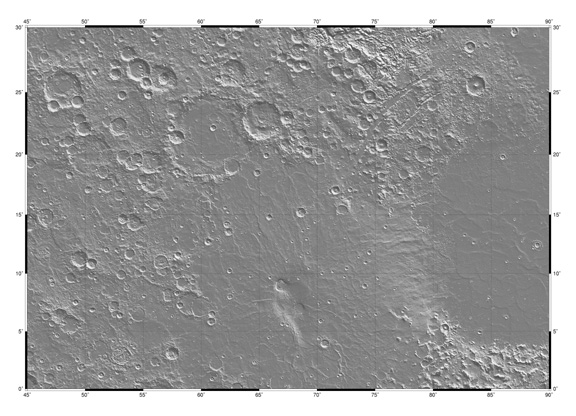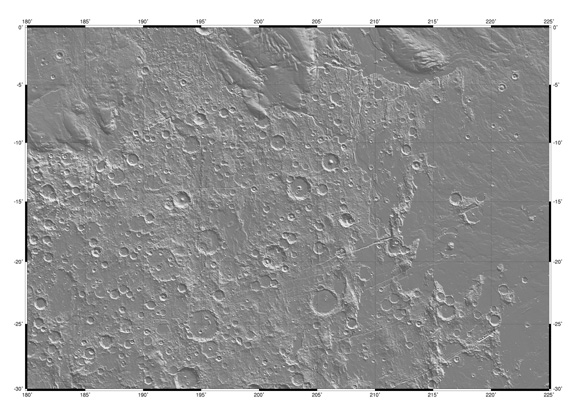MOLA Shaded Relief Quadrangle Maps

Low resolution version of shaded relief map of MC13 region of
Mars showing the Syrtis Major volcano (center bottom) and Isidis impact basin
(right). (Image Credit: Michael H. Carr and the MOLA Science Team)

Low resolution version of shaded relief map of MC16 region of
Mars showing Tharsis-related radial fractures (lower right) and the Medussae
Fossae formation (top). (Image Credit: Michael H. Carr and the MOLA Science
Team)
MGS Interdisciplinary Scientist Michael H. Carr, in collaboration with the MOLA
Science Team, has produced a set of 30 shaded relief quadrangle maps of Mars.
The maps are at a scale of 128 pixels/degree, and have been reconstructed from
MOLA standard data products. The data are presented in the same format as
pre-MGS USGS maps of Mars, except that they have been updated to use the MOLA
coordinate system (areocentric, east-positive longitude convention). The Martian
surface is divided into 30 quadrangles. Those within 30 degrees of the equator
are in Mercator projection; those in the 30-65 degree latitude belt are in
Lambert conformal projection, and the two poles are in Polar Stereographic
projection. These quad maps are interim products and still contain minor
artifacts caused by calibration errors and by interpolation where data is
sparse. However, these maps have been certified by the MOLA team as conforming
to MOLA standards and so we are pleased to make them available for geological
studies and landing site assessment. We expect to regenerate the quads, probably
Spring 2002, after the MOLA data are reprocessed with the most up-to-date IAU
geodetic parameters.
The full-resolution versions of the quad maps are 2.25 meters across and can
be printed map size.


